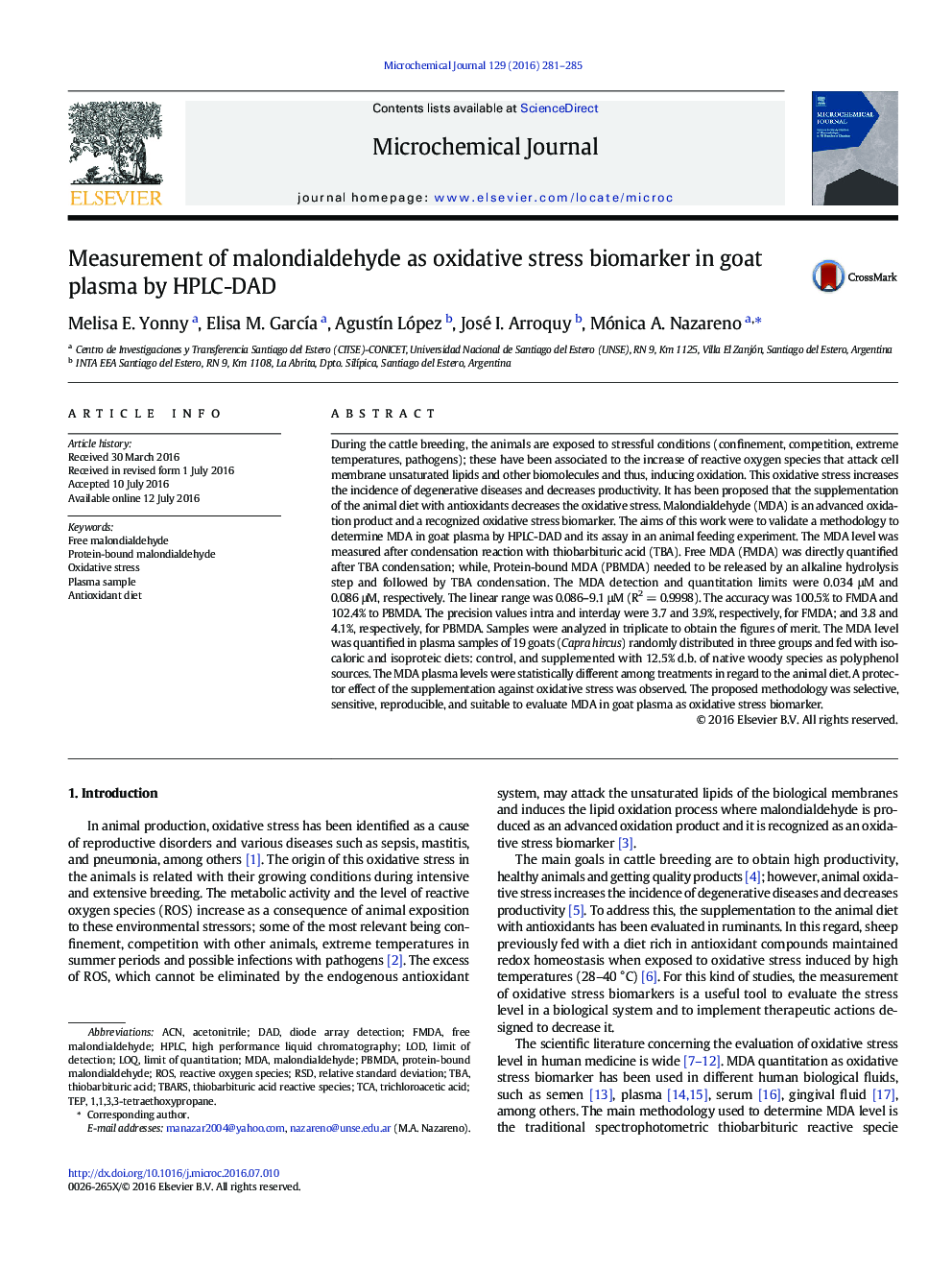| کد مقاله | کد نشریه | سال انتشار | مقاله انگلیسی | نسخه تمام متن |
|---|---|---|---|---|
| 1227619 | 1494865 | 2016 | 5 صفحه PDF | دانلود رایگان |

• A methodology based on HPLC-DAD was validated for MDA analysis in goat plasma.
• The proposed methodology was sensitive, selective, and reproducible.
• The animal oxidative status was evaluated in goat plasma by MDA measurement.
• MDA levels in goat plasma were statistically different after a feeding experiment.
• A protective effect against oxidation of antioxidants in the goat diet was found.
During the cattle breeding, the animals are exposed to stressful conditions (confinement, competition, extreme temperatures, pathogens); these have been associated to the increase of reactive oxygen species that attack cell membrane unsaturated lipids and other biomolecules and thus, inducing oxidation. This oxidative stress increases the incidence of degenerative diseases and decreases productivity. It has been proposed that the supplementation of the animal diet with antioxidants decreases the oxidative stress. Malondialdehyde (MDA) is an advanced oxidation product and a recognized oxidative stress biomarker. The aims of this work were to validate a methodology to determine MDA in goat plasma by HPLC-DAD and its assay in an animal feeding experiment. The MDA level was measured after condensation reaction with thiobarbituric acid (TBA). Free MDA (FMDA) was directly quantified after TBA condensation; while, Protein-bound MDA (PBMDA) needed to be released by an alkaline hydrolysis step and followed by TBA condensation. The MDA detection and quantitation limits were 0.034 μM and 0.086 μM, respectively. The linear range was 0.086–9.1 μM (R2 = 0.9998). The accuracy was 100.5% to FMDA and 102.4% to PBMDA. The precision values intra and interday were 3.7 and 3.9%, respectively, for FMDA; and 3.8 and 4.1%, respectively, for PBMDA. Samples were analyzed in triplicate to obtain the figures of merit. The MDA level was quantified in plasma samples of 19 goats (Capra hircus) randomly distributed in three groups and fed with isocaloric and isoproteic diets: control, and supplemented with 12.5% d.b. of native woody species as polyphenol sources. The MDA plasma levels were statistically different among treatments in regard to the animal diet. A protector effect of the supplementation against oxidative stress was observed. The proposed methodology was selective, sensitive, reproducible, and suitable to evaluate MDA in goat plasma as oxidative stress biomarker.
Journal: Microchemical Journal - Volume 129, November 2016, Pages 281–285